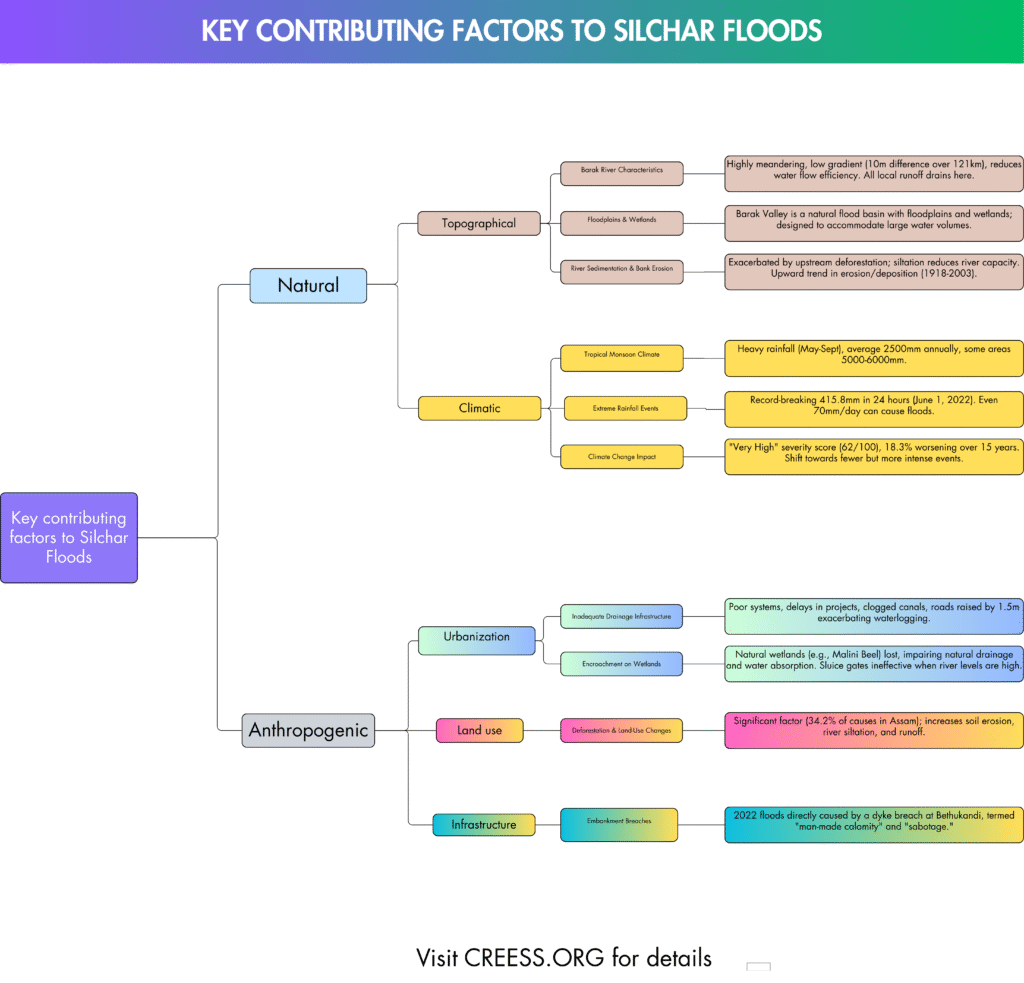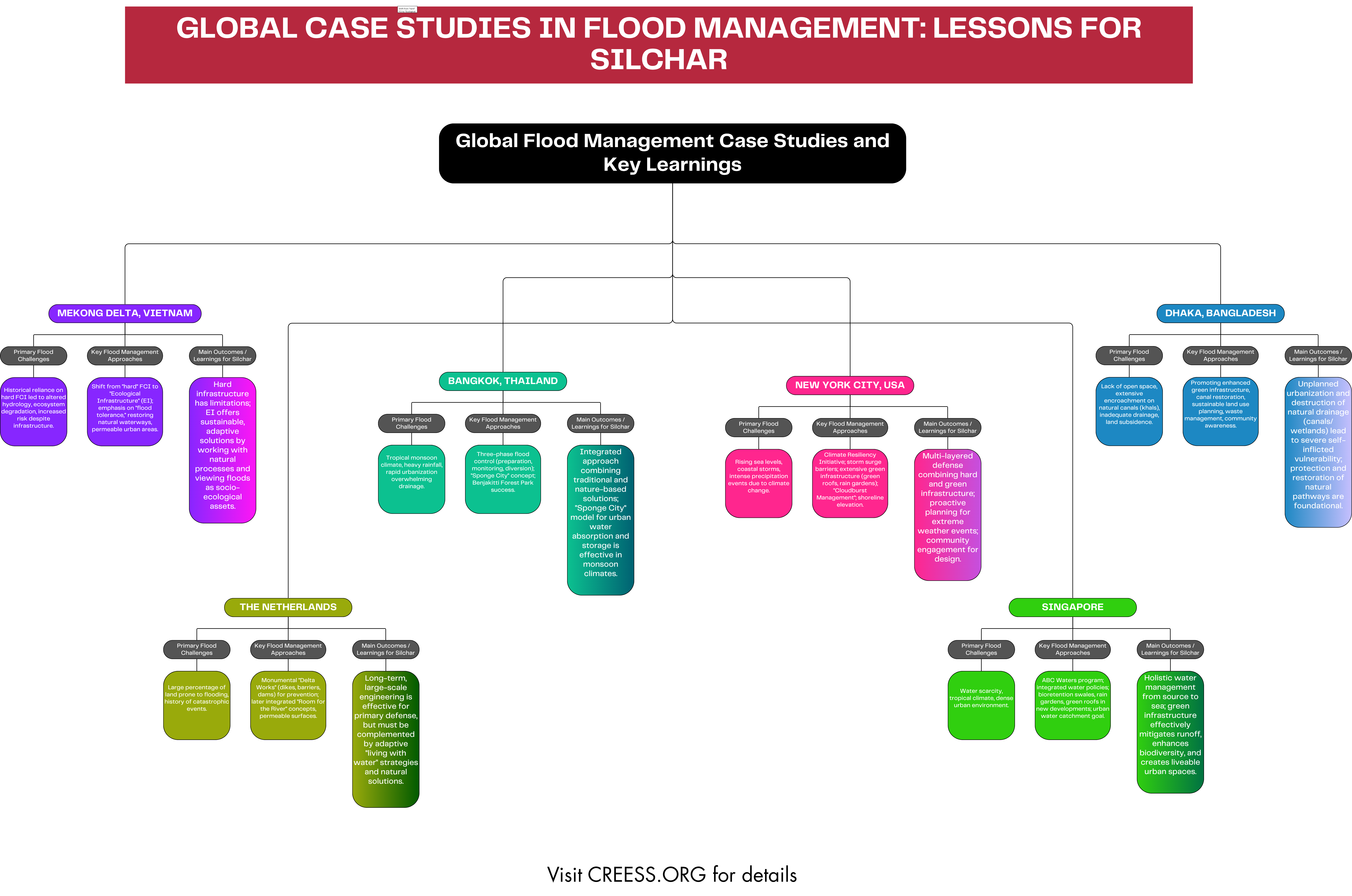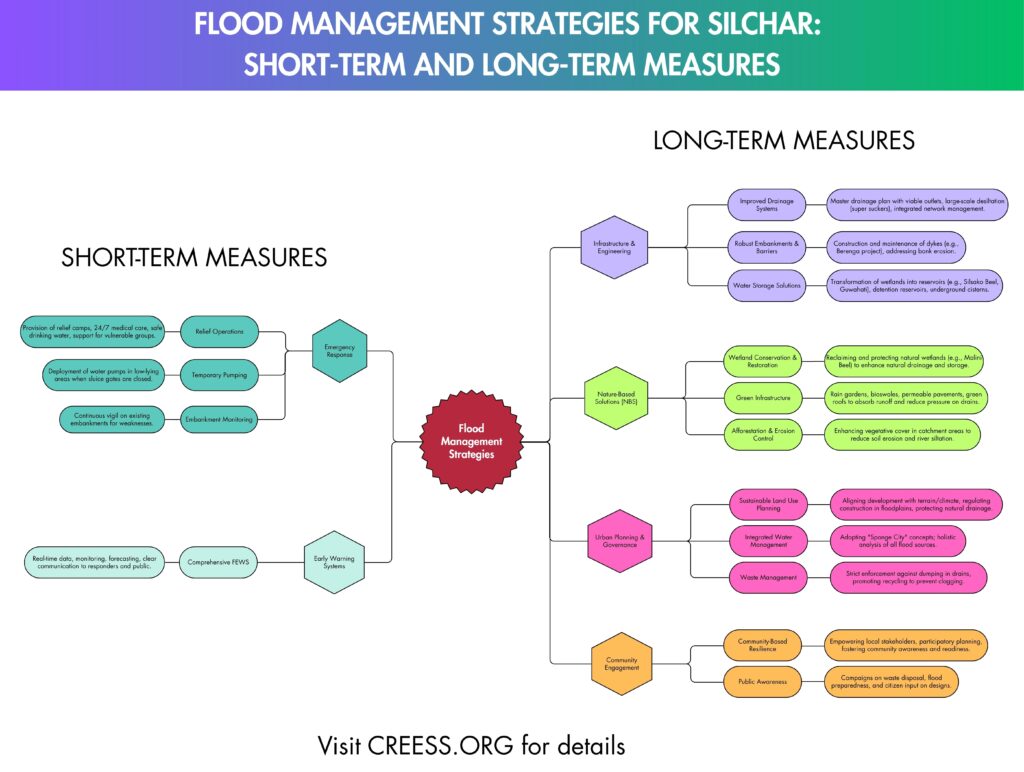


Understanding and Mitigating Flood risk in Silchar, Assam
Silchar, the second-largest city in Assam, faces chronic and escalating flood challenges, exemplified by the catastrophic 2022 event that submerged 90% of the town for 11 days.1 This report provides a comprehensive analysis of the multifaceted causes underlying Silchar’s flood vulnerability, examining the intricate interplay of its unique topography, changing climate patterns, and rapid, often unplanned, urbanization. The analysis reveals that the city’s location within the low-gradient Barak River floodplain, coupled with increased sediment load from upstream deforestation and a shift towards more intense rainfall events, creates a dangerous hydrological predisposition to inundation.3 Compounding these natural factors are critical anthropogenic issues, including severely inadequate drainage infrastructure, widespread encroachment on vital natural wetlands, and, notably, instances of deliberate embankment breaches.2
Community-Driven elephant conservation
Botswana stands as a global stronghold for African elephants, hosting the continent’s largest population, estimated between 130,000 and 140,000 individuals.1 While this robust population signifies a remarkable conservation success, the high elephant density and their expanding range inevitably lead to significant human-elephant conflict (HEC) with local communities, impacting livelihoods and potentially eroding conservation support.1 Consequently, direct community participation is not merely an auxiliary component but a foundational pillar of Botswana’s national conservation strategy, aiming to foster harmonious coexistence and ensure the long-term viability of both human and elephant populations.9
